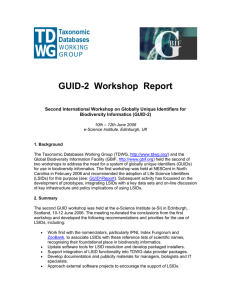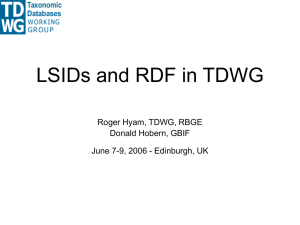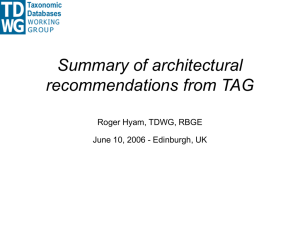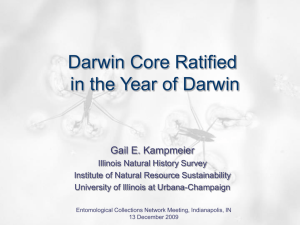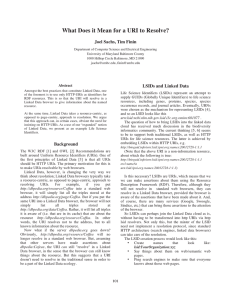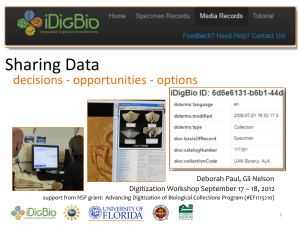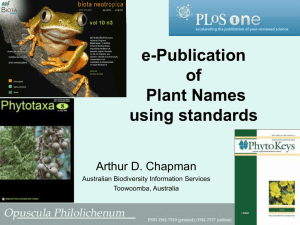TDWG GUID Workshop 2 Goals and Overview for Day 1 Donald Hobern
advertisement
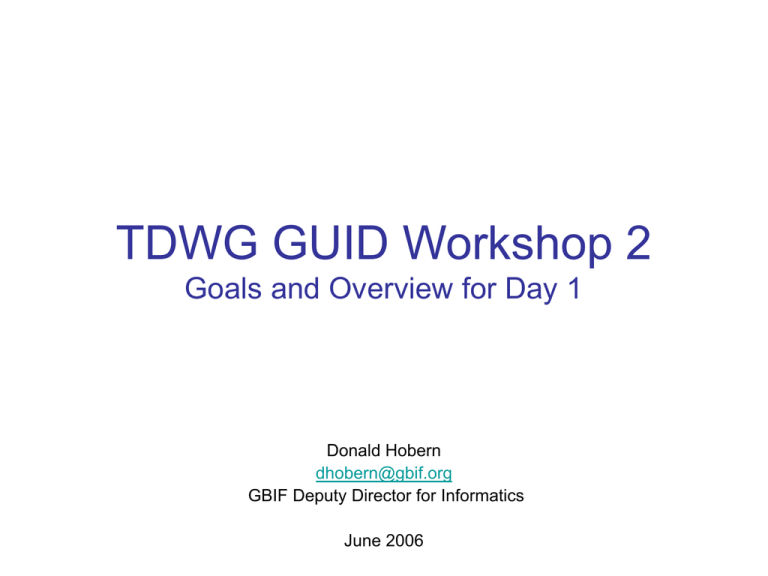
TDWG GUID Workshop 2 Goals and Overview for Day 1 Donald Hobern dhobern@gbif.org GBIF Deputy Director for Informatics June 2006 Progress so far… GUID Workshop 1 • Recommended use of LSID as technology for use within TDWG • Did not preclude use of other GUIDs as appropriate • Recognised need for stronger policies for GUID assignment for foundational data types (especially taxon names, publications and specimens) • Most TDWG data would then be represented as (RDF) metadata Subsequent activity • Prototyping and evaluation of LSID technology across a range of projects and data types • Initiation of TDWG Technical Architecture Group (TAG), producing first draft report Why LSIDs? Other technologies are available, but LSIDs seemed an appropriate fit among other reasons because: • LSIDs meet the recognised need for GUIDs which could offer greater long-term stability than e.g. URLs • LSIDs represent a model with an existing specification and reference implementations (rather than inventing a standard from scratch) • LSIDs have some penetration among projects in other areas of bioinformatics • LSIDs can be issued cheaply and in unlimited numbers • LSIDs can easily be constructed to exploit existing identifiers where available • LSIDs include a model for handling versioning of associated data and metadata Roadmap for the workshop Day 1 – review prototyping activity • (Review recommendations of TDWG TAG) • Identify lessons learned and problems to be solved Day 2 – tools and infrastructure requirements • Consider state of existing software components • Identify and prioritise other required components • Consider infrastructure services required within biodiversity informatics to ensure proper management of GUIDs Day 3 – application and best practices • Develop recommendations for TDWG use of GUIDs • Develop guidance for TDWG working groups in application of GUIDs to different data types
